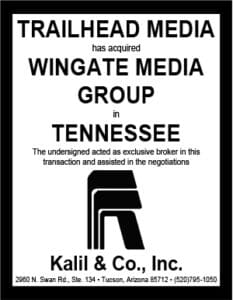 By Kevin Gephart
By Kevin Gephart
In previous posts I’ve talked about prospecting via social media. Today I’ll talk about generating prospects via associations, Dun and Bradstreet and client referrals.
Associations:
Pros: They can lift your profile and add credibility especially as a new sales rep. If you are inexperienced, associations are a great way for you to broaden your skill set. You can build your presentation chops and hone your leadership skills especially in associations like the Jaycees, Toastmasters, Rotary etc.
Cons: As a more experienced rep, you may find it difficult to justify the amount of time in relation to the business opportunity gained.
If you are going to become a member of an association, be active in the membership committee. This will give you first notice of new members coming in and on the radar. You can pursue new members under your “association membership committee hat“ and also be gathering prospecting data while positioning yourself as a trusted business partner. These are activities that you can likely do in tandem with your sales day.
One of the most tangible ways to make money with an association is to create an “affinity “program. This is an exclusive billboard sales offering to members of your association to buy billboards at a reduced cost building exposure/advertising for the association itself, likely during a specific time period (IE: Shop Local campaign, Holiday shopping, Back to School, First Quarter, etc.)
The incentive is that every dollar purchased by the members of the association in these plans, you give the association X% of the money as a “bonus”. They can use the accrued credit for the associations advertising: (IE: Shop Local, Crazy Days events, member recruiting, etc.).
You make the offer to the association members with the blessing of the association leadership. To help sell it ideally they would allow you do a group presentation; include your offer in their newsletter/website/member email blast and allow you use of their endorsement in your sales materials.
Dun & Bradstreet
Your company may already use Dun & Bradstreet data for determining credit worthiness of new customers. If so, through that arrangement explore your options for getting sales leads (maybe at a reduced cost?).
If that’s not an option, pursue Dun and Bradstreet directly to find their offerings. Remember it is an investment in your own business and may pay big! The complete descriptions of Dun & Bradstreet tools can be found at DNB.com
Pros: It can be a very valuable database and they have many sales tools. Because D & B is well-known with a highly trusted database, I would expect the data provided is current and robust.
It can make pursuing prospects in a vertical category (i.e.: all of the car dealers, all of the home builders, etc.) or a certain account size, very easy.
Cons:
This data may already be available within the premium level of LinkedIn.
It doesn’t necessarily tell you who has an immediate need to advertise and it may be too expensive for the return. You’ll only know by doing a test.
Client referrals:
Client referrals are the holy grail of prospecting. When you can cold call someone being referred by one of your customers/acquaintances, that is the ultimate door opener.
Just about every sales training piece published instructs you to ask your current customers who they know that could make use of your help. That question doesn’t often produce good results. It is too broad, doesn’t focus their thinking, and they don’t want you to “dog” their friends.
If you ask who else is having similar challenges (be it market-share, overall sales volume, customer traffic, account attrition etc.) that could be a more direct route to pursue other people in the same business/category.
Referrals, however, are hard to cultivate and often have a slow return. Therefore it is hard to use client referrals as a main source of prospecting.
[wpforms id=”9787″]
Paid Advertisement

















